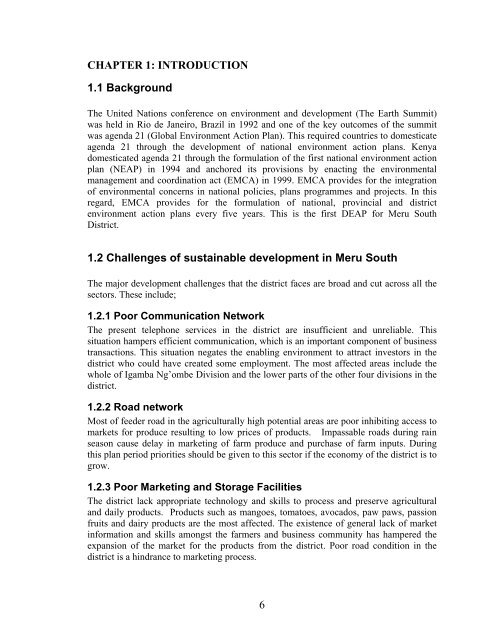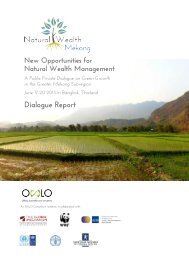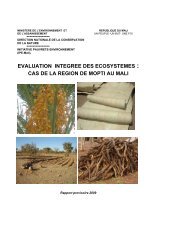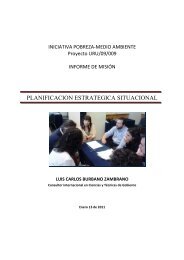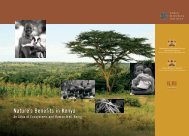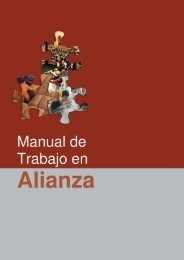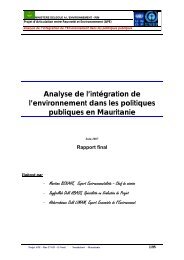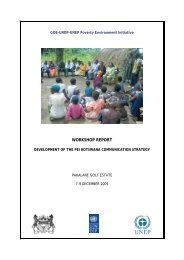Meru South District - UNDP-UNEP Poverty-Environment Initiative
Meru South District - UNDP-UNEP Poverty-Environment Initiative
Meru South District - UNDP-UNEP Poverty-Environment Initiative
Create successful ePaper yourself
Turn your PDF publications into a flip-book with our unique Google optimized e-Paper software.
CHAPTER 1: INTRODUCTION<br />
1.1 Background<br />
The United Nations conference on environment and development (The Earth Summit)<br />
was held in Rio de Janeiro, Brazil in 1992 and one of the key outcomes of the summit<br />
was agenda 21 (Global <strong>Environment</strong> Action Plan). This required countries to domesticate<br />
agenda 21 through the development of national environment action plans. Kenya<br />
domesticated agenda 21 through the formulation of the first national environment action<br />
plan (NEAP) in 1994 and anchored its provisions by enacting the environmental<br />
management and coordination act (EMCA) in 1999. EMCA provides for the integration<br />
of environmental concerns in national policies, plans programmes and projects. In this<br />
regard, EMCA provides for the formulation of national, provincial and district<br />
environment action plans every five years. This is the first DEAP for <strong>Meru</strong> <strong>South</strong><br />
<strong>District</strong>.<br />
1.2 Challenges of sustainable development in <strong>Meru</strong> <strong>South</strong><br />
The major development challenges that the district faces are broad and cut across all the<br />
sectors. These include;<br />
1.2.1 Poor Communication Network<br />
The present telephone services in the district are insufficient and unreliable. This<br />
situation hampers efficient communication, which is an important component of business<br />
transactions. This situation negates the enabling environment to attract investors in the<br />
district who could have created some employment. The most affected areas include the<br />
whole of Igamba Ng’ombe Division and the lower parts of the other four divisions in the<br />
district.<br />
1.2.2 Road network<br />
Most of feeder road in the agriculturally high potential areas are poor inhibiting access to<br />
markets for produce resulting to low prices of products. Impassable roads during rain<br />
season cause delay in marketing of farm produce and purchase of farm inputs. During<br />
this plan period priorities should be given to this sector if the economy of the district is to<br />
grow.<br />
1.2.3 Poor Marketing and Storage Facilities<br />
The district lack appropriate technology and skills to process and preserve agricultural<br />
and daily products. Products such as mangoes, tomatoes, avocados, paw paws, passion<br />
fruits and dairy products are the most affected. The existence of general lack of market<br />
information and skills amongst the farmers and business community has hampered the<br />
expansion of the market for the products from the district. Poor road condition in the<br />
district is a hindrance to marketing process.<br />
6


